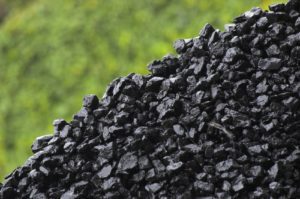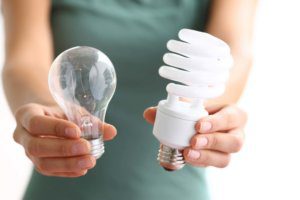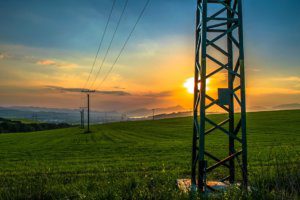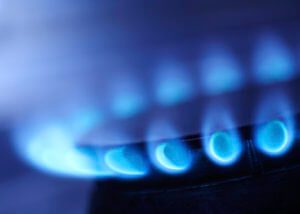
Ukraine’s thermal power plants (TPP) and combined heat and power plants (CHPP) in January-May 2019 reduced coal consumption by 4.4% (or 498,400 tonnes) compared to the same period in 2018, to 10.71 million tonnes.
According to the Ministry of Energy and Coal Industry, in May 2019, coal consumption at TPPs and CHPPs increased by 1% (or 18,100 tonnes) compared to the same month of 2018, to 1.835 million tonnes.
As reported, consumption of steam coal by TPPs and CHPPs in the country in 2018 increased by 5.7% (1.409 million tonnes) compared with 2017, to 26.22 million tonnes.
The use of gas coal rose by 11.1% (2.74 million tonnes), to 20.813 million tonnes, while that of anthracite decreased by 11% (665,600 tonnes), to 5.408 million tonnes.
The share of anthracite consumption in the total amount of coal consumed by thermal generation plants in 2018 was 20.6% against 24.5% in 2017 and 40.9% in 2016, the figures for gas coal stood at 79.4%, 75.5% and 59.1% respectively.

Electricity consumption in Ukraine in January and February 2019, taking into account in-process consumption in power grids, increased by 0.7% (by 187.4 million kWh) compared to the same period last year, to 28.442 billion kWh, the Ministry of Energy and Coal Industry has told Interfax-Ukraine.
Without taking into account in-process consumption, electricity consumption in January and February 2019 rose by 0.8% (by 177 million kWh), to 22.332 billion kWh.
The country’s industry, excluding in-process consumption, decreased electricity consumption by 1.9%, to 8.679 billion kWh. Metallurgical industry consumed 4.905 billion kWh (1.1% down compared to January and February 2018), fuel industry some 613.9 million kWh (2.5% less), machine building industry some 781.1 million kWh (1.8% less), chemical and petrochemical sectors some 460.9 million kWh (17.2% less), food and processing industries some 746.4 million kWh (4.6% more), the sector of construction materials some 282.1 million kWh (11.1% less), and others some 889.8 million kWh (1.9% more).
In addition, agricultural enterprises consumed 625.9 million kWh (4.6% more), transport companies some 1.278 billion kWh (0.6% more), and construction enterprises some 216.2 million kWh (8.1% more).
In January and February 2019, the country’s population consumed 7.015 billion kWh (1% up), household consumers some 3.003 billion kWh (0.8% more), and other non-industrial users some 1.516 billion kWh (15.1% more).

Electricity consumption in Ukraine in January-November 2018, taking into account in-process consumption in power grids, increased by 1.8% over the same period of 2017, to 137.831 billion kWh, the Ministry of Energy and Coal Industry has told Interfax-Ukraine.
Excluding in-process consumption, electric power consumption for this period increased 2.2%, to 110.212 billion kWh.
The industry of the country excluding in-process losses raised electricity consumption by 2.3%, to 47.407 billion kWh. In particular metallurgical industry consumed 27.013 billion kWh (2.1% more from January-November 2017), fuel some 3.22 billion kWh (2.3% less), machine building some 3.661 kWh (2% more), chemical and petrochemical some 2.883 billion kWh (10.1% more), food and processing some 4.085 billion kWh (1.7% more), construction materials some 2.116 billion kWh (1.5% more), others some 4.43 billion kWh (3.2% more).
In addition, agricultural enterprises consumed 3.523 billion kWh (5.9% more), transport some 6.272 billion kWh (1.6% less), and construction 850.3 million kWh (6.9% more).
The population of the country in January-November 2018 consumed 32.151 billion kWh (1.4% up), municipal and household consumers 13.917 billion kWh (2.8% up), other non-industrial consumers 6.091 billion kWh (6.8% more).

The Indian pharmaceutical market in Ukraine could grow by 2% in 2019, President of the Indian Pharmaceutical Manufacturers’ Association (IPMA) Dr. Menon has said at a press conference at Interfax-Ukraine. “Indian pharmaceutical products consistently rank third among importing countries in Ukraine. We are optimistic about 2019 and we expect the market of Indian pharmaceutical products to grow in Ukraine,” he said.
Indian Ambassador to Ukraine Partha Satpathy, in turn, notes that India can meet the needs of Ukraine in inexpensive and high-quality medicines.
“Indian pharmaceutical products account for only 5% of the total pharmaceutical consumption in Ukraine. This is a large amount – more than $150 million, but in today’s conditions Ukraine needs effective medicines that will not be very expensive. This is where Indian pharmaceutical manufacturers will help, whose medicines cost one-sixth, one-tenth of the western analogues. All medicines are certified by the WHO,” he said.
The ambassador also noted that India ranks first in terms of the number of GMP certified products, therefore the Indian pharmaceutical market in Ukraine should grow.

The forecast balance of electricity of Ukraine for 2019 approved by Ukraine’s Energy and Coal Industry Minister Ihor Nasalyk on September 28, 2018, envisage growth of electricity consumption by 1.7% (2.5 billion kWh) compared with the projected figures for 2018, to 153.5 billion kWh.
According to the document, the export of electricity is provided in the amount of 6.42 billion kWh, which is 9.5% higher than the figure in the forecast balance of 2018 (5.855 billion kWh).
The improvement in the forecast is due to the expected growth in supplies to Moldova (a rise of 2.4%, to 1.08 billion kWh), Poland (a rise of 20%, to 1.44 billion kWh) and from Burshtyn Island ( a rise of 8.3%, up to 3.9 billion kWh).
Electricity imports in 2019, as in the current year, are not planned.
The following sources remain the main sources of covering demand for the next year: NPPs – 83.045 billion kWh (a fall of 1.5% compared with the 2018 balance), TPPs – 50.837 billion kWh (a rise of 4.1%), CHPP and cogeneration plants – 12.544 billion kWh (a rise of 6.4%), HPPs – 8.9 billion kWh ( a fall of 0.6%).
It is planned that alternative sources (wind farms, solar power plants and other plants) will increase the production of electricity by 72.4%, to 3.5 billion kWh, blocking stations – by 1.2%, to 1.626 billion kWh, while pump storage power plants’ generation will be reduced by 22.1%, to 1.412 billion kWh.

Ukraine boosted natural gas consumption in January-April 2018 by 4%, or 600 million cubic meters (mcm) year-over-year, to 15.8 billion cubic meters (bcm). In particular, the industry consumed 5 bcm of gas (a 25% increase from January-April 2017), while households, municipal heat suppliers and budget organizations used 9.6 bcm (a 4% decrease), the Ukrainian Energy and Coal Ministry has said.
Some 1.2 bcm of gas was used for production and other needs (no change year-over-year). As was reported earlier, Ukraine in 2017 reduced natural gas consumption by 0.5%, or 161 mcm of gas from 2016, to 32.2 bcm.